
100 Years: A Gleaming Tradition of Tea
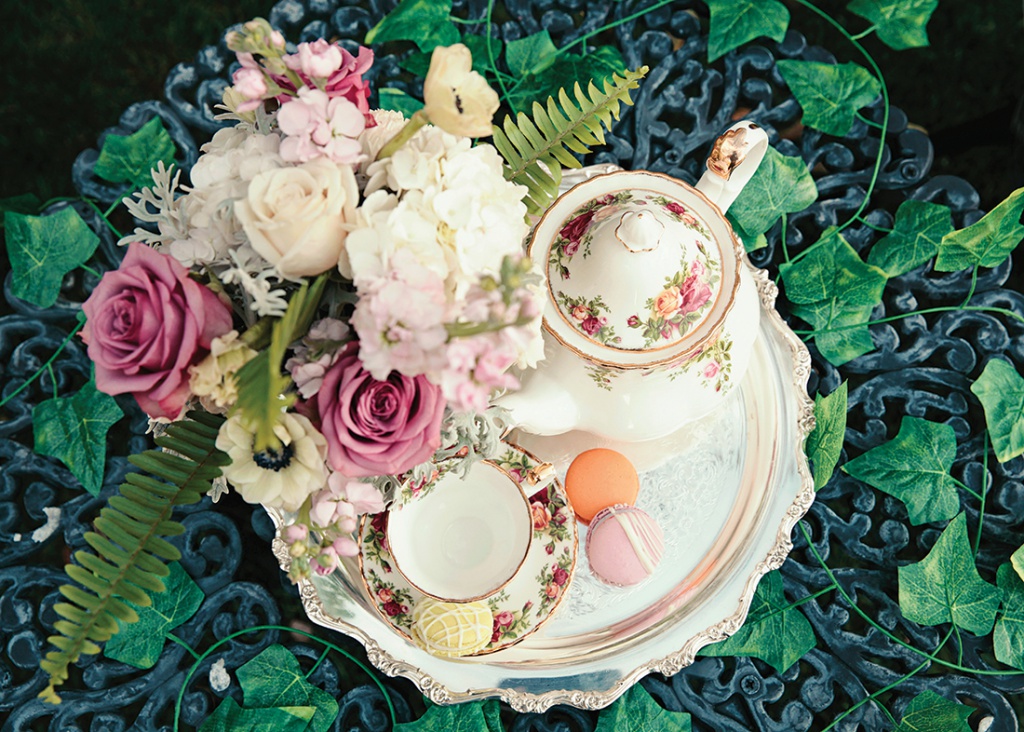
The Woman’s Board of Westminster College celebrates the 100th anniversary of its Silver Tea
By Jacqueline Dobbins (’16) Photography by MANICPROJECT
The silver is polished and sparkling, the tables are set, the tea is hot, and women adorned in extravagant hats happily greet one another as they attend the epitome of a girls’ day. It’s the Woman’s Board of Westminster College’s annual Silver Tea, and it’s an event not to be missed. On May 14, the board will celebrate the 100th anniversary of the tea, and in honor of its long-standing contributions to the school, we take a walk down memory lane to the beginnings of the beloved Woman’s Board.
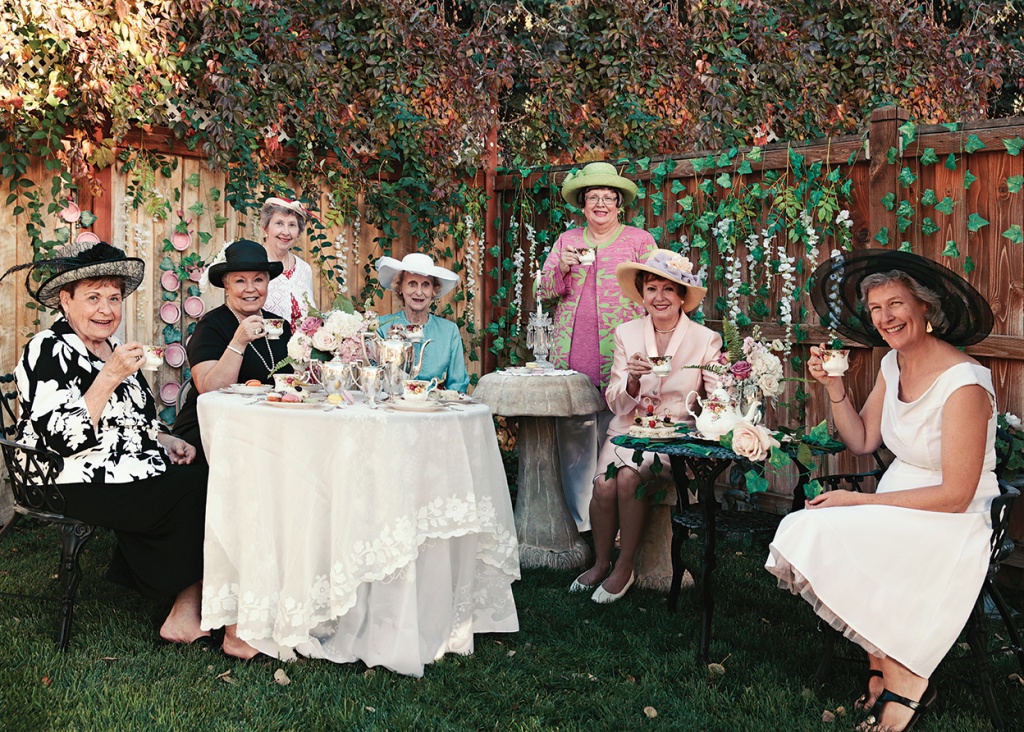
Woman’s Board members enjoy an afternoon Tea at the home of Bj Van Roosendaal. From Left: Corrine Riekhof, Lorna Genereaux, Virginia Hughes, Noreen Rouillard, BJ Van Roosendaal, Catherine Meldrum, and Alicia Odell.
Humble Beginnings
In 1902, Colonel William M. Ferry donated 20 acres of land to the college, requiring that five acres be set aside for women’s housing and that a Woman’s Board be created.
In a letter to the college, Col. Ferry outlined the responsibilities of the 11 women on the inaugural board: “Internal affairs of the Woman’s Building, such as the furnishings of the rooms, the price of board, the employment of servants, the selection of the matron, the care of the grounds, together with all repairs and improvements shall be under the direct supervision of a Board of Women Managers.”
By 1903, the women had been appointed, and the first Woman’s Board meeting was held, led by their president—and Col. Ferry’s wife—Jeannette Ferry. With an initial contribution of $1,000, the women took on the challenge of raising the remaining $25,000 required to complete the construction of the women’s building, Ferry Hall.
In 1906, Jeannette Ferry donated $15,000 to the completion of the building, but required that the board first raise the remaining $10,000. Three years later, they had the money, and construction had begun. After another two years, Ferry Hall was complete, and the Woman’s Board held its first meeting in the building they had worked so hard to create.
With the women’s building completed, and quickly filled, the Woman’s Board took on the roles detailed by Col. Ferry in 1902. In the years following Ferry Hall’s completion, the board expanded its numbers and its methods of fundraising. In 1916, the Silver Tea was born.
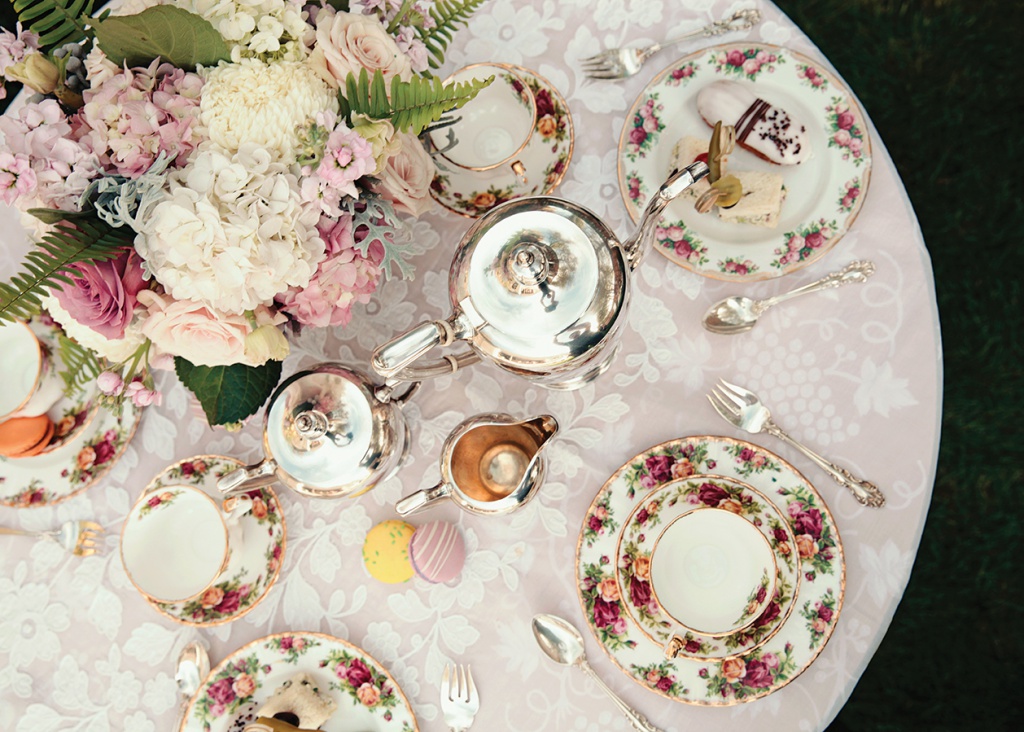
A Tradition of Tea
On May 10, 1916, each of the 25 women on the board was instructed to invite 10 people to a Silver Tea to be held at the home of a member of the board. The board raised $32.80.
Though by modern standards a $33 profit is hardly something to brag about, the Silver Tea quickly became the board’s most popular—and successful—event. In the following years, the tea grew to also include an apron sale.
It was a hit. Each apron was handmade, and the women began making 350–400 aprons a year—all of which fit the current fashion.
Each May, attendance at the tea and apron sale grew, and the Woman’s Board soon found itself able to give more back to the college. Gone were the days of simply maintaining Ferry Hall. Now, the Woman’s Board was one of the largest sources of fundraising for Westminster.
Before long, the annual Silver Tea became a tradition for women of all ages. “The tea has been so successful because it’s become a tradition for a lot of people: the more people who are aware of it, the bigger it gets,” says Randi Morgan, an associate member of the board and President Steve Morgan’s niece. “Last year, I had 15 women and girls in my family there. It’s a fun opportunity to get together as the girls for something different and unique, and it happens to serve a good cause.”
In the 100 years since its inception, the Silver Tea has taken many different forms but has always included delicious food and hot tea fit for an English tea room.
In the 1970s, following the women’s movement away from traditional roles, the tea morphed from an apron sale to what was affectionately called Grandma’s Attic, a boutique and rummage sale—with a spot of tea, of course. One year, the board even hosted a booth, cleverly entitled Plant Parenthood, where attendees could browse indoor and outdoor plants ready for adoption.
A 1979 clipping of a Salt Lake Tribune article in the college archives describes the draw of Grandma’s Attic: “Grandma’s Attic traditionally had been a place for ‘can’t bear to part with and someone in the family might want it’ items,” the article states. “It can be a place to spend fascinating hours looking at and examining treasures.”
By the 1980s, Grandma’s Attic at the tea was drawing hundreds of attendees and raising over $10,000 each year. Its success only continued to grow, even as the college was in the midst of a financial crisis.
In the 1990s, the tea changed its theme again: going global. Organized by Noreen Rouillard, a long-standing member of the board, the women held a World Bazaar and Tea that featured handcrafted gifts from around the world. The sale of the gifts supported the work of the Woman’s Board and artisans in refugee camps and developing nations.
The event brings together women of all ages who look forward to the Silver Tea every year. “My favorite memory is the year I took my grandmother Morgan’s mother to the tea, just us two,” Randi Morgan says. “She loved it. I took my niece to the last one—she had just turned three. She got on tea-party steroids. She was excited to wear her hat and bring her purse and lipstick and get all dressed up to go to a tea party.”
Though its form has changed with the times, the purpose behind the Silver Tea has remained constant: to help the students of Westminster.
Helping Westminster Grow
The Woman’s Board’s first contribution to Westminster was a big one: the construction of Ferry Hall. Yet its contributions to the college have only grown since the early years.
Initially, the women focused their fundraising efforts on maintaining Ferry Hall, but they soon expanded to include funding scholarships, landscaping, building restoration, library books, and equipment, as well as donating countless volunteer hours. In 1915, the Woman’s Board funded a Domestic Science Department and decades later, the college’s first computers.
“We’ve always been here to support the school, but also the students,” says Noreen Rouillard, a 30-year member of the board and twice a past president.
In 1978, they established the permanently endowed Woman’s Board Scholarship Fund, through which they have helped numerous students over the years.
“We can learn so much from our students,” says Lorna Genereaux, the current president of the Woman’s Board. “In the world today, we often wonder, ‘where is this world going?’ But after spending time with the students, you get a very confident feeling that we’ll be okay under their leadership and guidance. “
The Woman’s Board is a legacy at Westminster, and the women are a part of its backbone. “The Woman’s Board has been there forever,” Randi Morgan says. “A lot of really strong women have been a part of the board, and they’re kind of lifers. Once they’re in, they stay in. It has been a part of Westminster for over 100 years and has helped make women important on campus—and an important part of the legacy of the school.”
What started as $25,000 to complete a building dedicated to the education of women has grown to over $1 million of fundraising devoted to supporting Westminster in all forms. As the funds have grown, so has the board, transforming from 11 members to over 70—43 active and 28 associate.
“I like to do some good,” says Virginia (Ginny) Hughes, a member of the Woman’s Board for 17 years and a past president. “That’s what we do on the Woman’s Board. It is so important because of the support we can provide to the students with scholarships.”
That’s a sentiment echoed by many of the board members and the reason so many decide to join. “That’s pretty much the goal of the Woman’s Board,” Noreen Rouillard says. “To support the college where they need us and be able to help students come to Westminster that might not have been able to.”
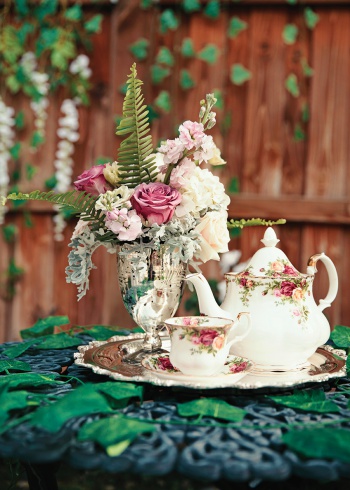
100 Years Later: A Modern Board
Each year, more and more young women join the Woman’s Board, on their way to becoming “lifers”—lifelong contributors to Westminster. Randi Morgan is one such member. Celebrating her first year on the Woman’s Board, Randi is excited to continue her time on the board and looks forward to getting to know more members, new and old.
“I will continue to be a part of the board for as long as they allow me to,” Randi says. “It allows me to network and build contacts with really amazing women. I really admire what the Woman’s Board does. I like that we exist to raise scholarship funds.”
While women of all ages are crucial to the success of the Woman’s Board, some members note that the future is in the hands of new, younger members. “Looking toward the future of the board, and to continue to be successful, we need to focus on younger energy-driven members, with technical skills to bring the next generation along,” Lorna Genereaux says. “They are the future of the board.”
The women of the board have high hopes for that future. They are determined to grow further—physical space allowing—and to continue to support Westminster and provide scholarships for students.
“I often wonder if we could go back in time, like having a cup of tea in heaven, and ask the early founding members: did they ever think what a fabulous thing they’ve created in the Woman’s Board in 1903 and the Silver Tea in 1916?” Lorna says. “It’s unbelievable to me, their vision and wisdom. I hope they’d be pleased with us today.”
With tables set, silver polished, food perfected, tea ready to pour, and hats on, the Woman’s Board will celebrate the last 100 years of the Silver Tea and ring in its next century as a Westminster legacy.
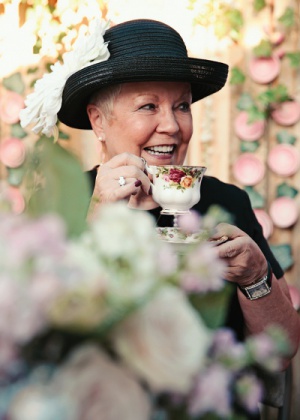
Lorna Genereaux, the current president of the Woman’s Board, truly loves the Silver Tea, citing it as one of the reasons she decided to join the board after a current member and friend invited her six years ago. She’s originally from Canada and has spent time living in England, enjoying afternoon and high teas and weekend trips to Paris and the Continent. It’s safe to say an appreciation for beautiful, elegant teas and great conversations is in her blood. She’s excited to celebrate 100 years of the Silver Tea and to raise even more funds to support the college and its students.
“Our tea brings back many fond memories for me. Having tea is really so civilized! Great conversations, relaxing, and enjoying time with friends—I don’t believe there is any other tea like it in the Salt Lake area, perhaps even in Utah!”
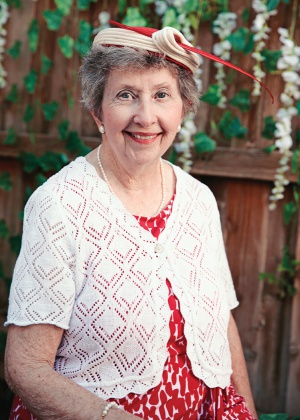
Encouraged to join by a friend 17 years ago, Virginia (Ginny) Hughes has held numerous offices over the years. From recording secretary to president to now treasurer, the board trusts her to help it succeed. Ginny is a second-generation member of the Woman’s Board and was first introduced to it—and the college—during her mother’s time on the board. She loves the Silver Tea and its ability to help students and do some good. She encourages people to attend because, “after all, it’s for a good cause, and it’s a fun party!”
“I had no connection whatsoever to Westminster, except for one thing: my mother was a member of the Woman’s Board over 40 years ago. She joined because her friends were on it—and so did I.”
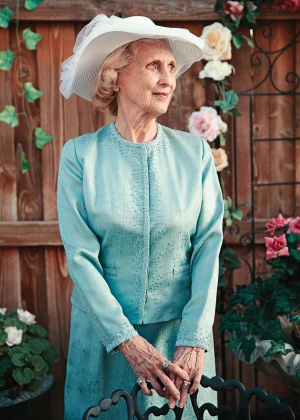
Noreen Rouillard was on the Board of Trustees for 21 years—from which she reluctantly resigned due to her husband’s health—and is celebrating 30 years on the Woman’s Board. She came to Westminster to attend college, but after finding the love of her life, she married and left the school: she’s also celebrating 67 years of marriage. Noreen later returned and joined the Woman’s Board. In 2012, she received an Honorary Doctorate of Humanities, adding “Dr.” to her “Mrs.” title. She’s been a central figure on the board for years and, according to another member, once almost single-handedly kept it going. She’s excited for the 100th anniversary of the Silver Tea and hopes it will raise record funds for student scholarships.
“I love being able to do something worthwhile for the community: raising money for students. It’s been a pleasure all these years to meet so many great gals and be able to feel you’re doing something to help.”
The Westminster Review is Westminster University’s bi-annual alumni magazine that is distributed to alumni
and community members. Each issue aims to keep alumni updated on campus current events
and highlights the accomplishments of current students, professors, and Westminster
alum. GET THE REVIEW IN PRINT Share Your Story Idea READ MORE WESTMINSTER STORIES
About the Westminster Review